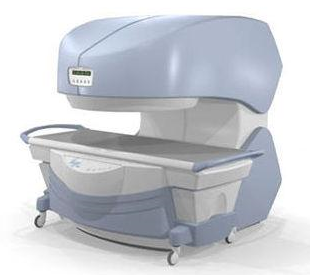 | Info
Sheets |
| | | | | | | | | | | | | | | | | | | | | | | | |
 | Out-
side |
| | | | |
|
| | | | |
Result : Searchterm 'Inversion' found in 17 terms [ ] and 43 definitions [ ] and 43 definitions [ ] ]
| previous 56 - 60 (of 60) Result Pages :  [1 2 3 4] [1 2 3 4]  [5 6 7 8 9 10 11 12] [5 6 7 8 9 10 11 12] |  | |  | Searchterm 'Inversion' was also found in the following services: | | | | |
|  |  |
| |
|
| | | |  | | | | | | | | |  Further Reading: Further Reading: | | Basics:
|
|
News & More:
| |
| |
|  |  | Searchterm 'Inversion' was also found in the following services: | | | | |
|  | |  | |  |  | |  |  | Searchterm 'Inversion' was also found in the following services: | | | | |
|  |  |
| |
|

From
Millennium Technology Inc.
This open C-shaped MRI system eases patient comfort and technologist maneuverability. This low cost scanner is build for a wide range of applications. The Virgo™ patient table is detachable and moves on easy rolling castors. Able to accommodate patient weights up to 160 kg, the tabletop has a range of motion of 30 cm in the lateral direction and 90cm in the longitudinal direction. Images generated with this scanner can only be viewed (without data loss) on Millennium's proprietary viewing software.
Device Information and Specification CLINICAL APPLICATION Whole body Head, Body, Neck, Knee, Shoulder,
Spine, Wrist, Breast, Extremity, Lumbar Spine, TMJ
IMAGING MODES Localizer, single slice, multislice, volume, fast, POMP, multi slab, cine, slice and frequency zip, extended dynamic range, tailored RF | |  | | | |
|  |  | Searchterm 'Inversion' was also found in the following services: | | | | |
|  |  |
| |
|
| |  | |
• View the DATABASE results for 'Volume Selective Excitation' (3).
| | | | |
|  | |  |  |
|  | | |
|
| |
 | Look
Ups |
| |